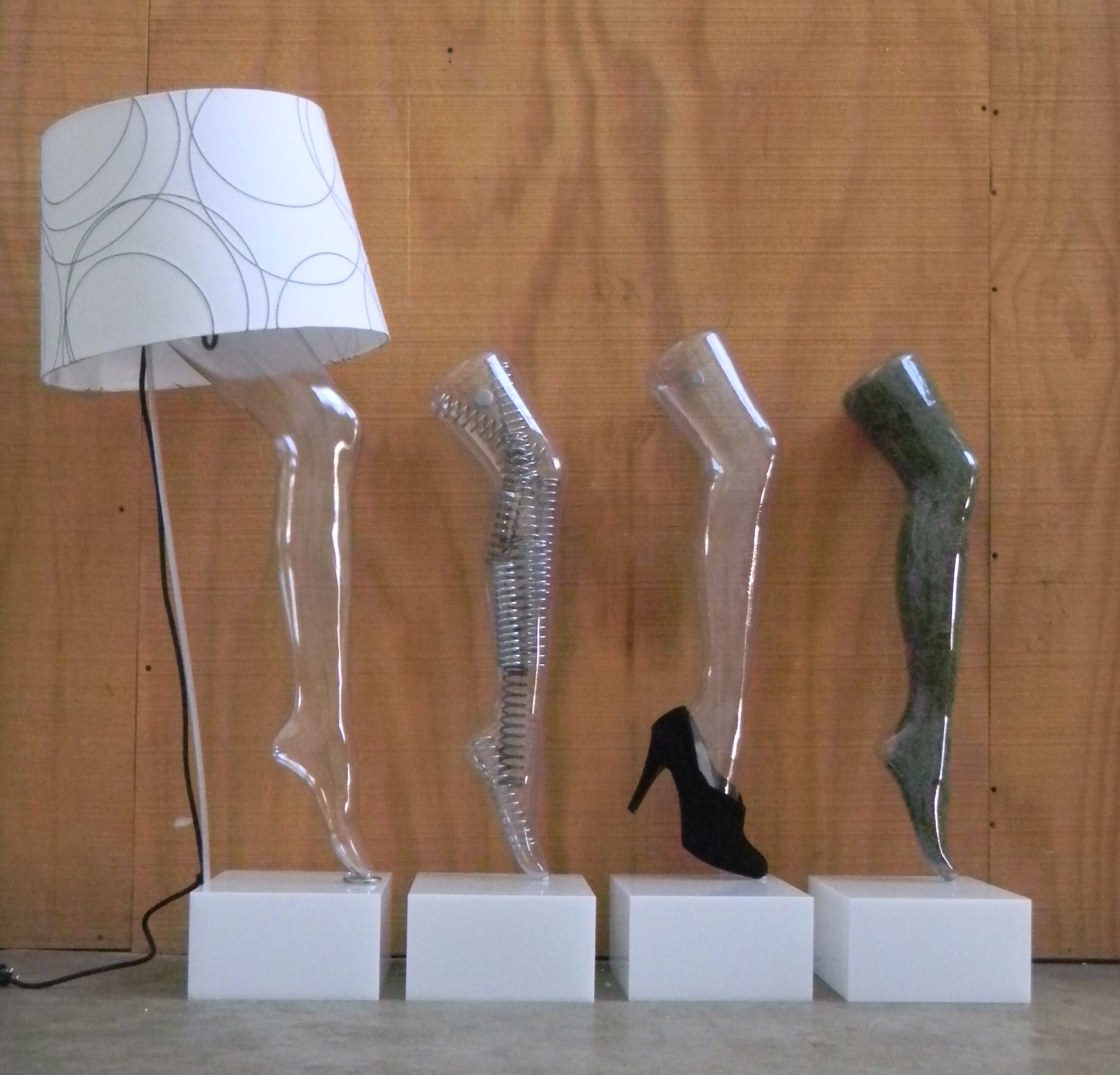As vendor of new and used mannequins, I have a ringside seat for all the non-traditional ways people use mannequins. And the maker community is repurposing them to create lamps and furniture.
Most people associate leg lamps with the one seen in the movie A Christmas Story. But they are not just for Christmas, and there are infinite varieties — just get creative. With this tutorial, both novice and experienced makers can put a contemporary spin on the traditional mannequin leg lamp.
Hosiery Leg Notes: Most clear hosiery legs are either plastic or acrylic. We used an acrylic leg, the one the far left. Although it is more expensive than the plastic leg — the second from left — it is sturdier and heavy enough to hold objects inside the leg.
The shape of the acrylic leg is slightly different from the plastic leg. The acrylic leg is flat at the top versus the plastic leg which has almost a 45-degree angle at the top. That 45-degree angle will prevent the lamp shade from sitting upright; instead it will be tilted.
If you use flesh-tone hosiery legs (right) which have a weighted toe, all the steps on this tutorial apply, except you will not need the washer to hold the leg in place.
A clear leg gives you the option of adding objects inside the leg in addition to putting a shoe on it. Once these objects are put inside the leg, they will remain part of the permanent design — you will have to take the leg apart to remove the objects.
You can find such legs at our website, Mannequin Madness, or at garage sales, fashion store closings, Craigslist, or Amazon.
Difficulty: Easy/Moderate
Time required: An afternoon
Cost: $60-100
Lamp design and photos by Tracy Blanks, a designer, prop stylist and photographer in the retail industry. Tutorial by Mannequin Madness






